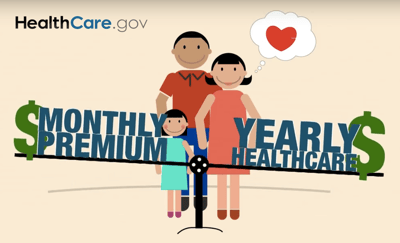The Step-by-Step Guide to Comparing Health Plans
 By Ava Runge
By Ava Runge
This article is part of a series focused on helping people with diabetes navigate health insurance in the United States. The last segment focused on how people with diabetes can pay for their medications and care. What should we write about in our next segment? Email us with insurance questions you would like us to address!
The 2017 Affordable Care Act reenrollment period began on November 1 and will continue through January 31. During this time, individuals and families can shop for health insurance plans on www.HealthCare.gov. While the recent US election results will change the insurance landscape in the coming years, it is likely that many of the factors governing diabetes costs will still apply. This Step-by-Step Guide is designed to share tips for comparing private health plans on the insurance marketplace.
Note: If you already have insurance, receive insurance through your employer, or use Medicare/Medicaid, you do not need to purchase a plan on Healthcare.gov. However, it can be helpful to preview and compare plans to ensure that your current plan is still the right fit for you – many insurance plans change their coverage benefits and premium costs each year, and may also change their preferred healthcare providers.
The Step-by-Step Guide:
-
Go to www.HealthCare.gov and enter your state under “take the first step to apply.” Continue to your state health plan marketplace, and see if you qualify for Medicaid. Adults age 65 and older are eligible for Medicare, and do not need to apply for private insurance through the marketplace.
-
Most state websites have a “preview plans” or “shop and compare tool,” which will provide a list of available health plans with coverage information.
-
Make a list of all the medications and devices you estimate using in 2017 –don’t forget non-diabetes supplies (e.g. contact lenses, birth control, Epipens).
-
Make a list of the number of healthcare appointments and services you estimate having in 2017. This might include appointments with diabetes educators, endocrinologists and other specialists, general practitioners, eye doctors, and dentists, as well as diagnostic tests and blood work (A1c, mammograms, colonoscopies, cholesterol labs, etc.).
-
Add any other anticipated healthcare expenses to your list. For example, are you pregnant? Do you have any surgeries planned? Are you on dialysis? Do you get hospitalized frequently for kidney stones?
-
Next, return to your state’s “preview plans” or “shop and compare tool,” and choose several health plans to compare.
-
Find the Summary of Benefits and Coverage and Formulary for each health plan – these documents are typically available through your state’s insurance marketplace or on the insurance provider’s website. Using these documents, determine the out-of-pocket costs for each medicine, device, and service for the full year. Add all of these costs together.
-
It is easiest to compare plans if you keep track of them in a simple grid. [Novo Nordisk’s Cornerstones4Care insurance guide offers a great worksheet starting on page 41.]
-
If you have trouble finding the price of diabetes devices or other products, call the insurance company or device manufacturer directly to see how much the device would cost you.
-
Keep in mind that there may be additional resources available to help with healthcare expenses. Check out a previous diaTribe article about paying for diabetes medications and services.
-
Add the deductible to the total costs so far, and compare this number to the out-of-pocket maximum. If your total out-of-pocket expenses are over the maximum, you’ll likely save money with the plan, since the plan will pay for all additional costs. Make sure to note whether the deductible counts toward the out-of-pocket maximum, however, as this will impact your total expenses (e.g., if your deductible does NOT count, then your out-of-pocket maximum is actually the maximum amount plus the deductible amount.
-
Note: If you have a high deductible plan (>$1,300 for self-only coverage or $2,600 for family coverage), you may be eligible for a Health Savings Account (HSA). An HSA is a tax-free medical savings account that you can contribute to and draw money from for certain medical expenses such as out-of-pocket medical, dental, and vision. Check out more information on HSAs here.
-
Add the premium for the year (monthly premium x 12). This total number is an estimate of how much the health plan would cost you in 2017.
-
Repeat steps 7-9 for each health plan and compare. (And yes, it is a lot of work – diaTribe would love to see this information made way more accessible!)
What if I still have questions?
-
Talk with your healthcare provider’s office staff
-
Call the health insurance company directly
-
Call the manufacturer of the drug or device you need covered
-
Call the distributor of the drug or device you need covered
-
Find a FREE Healthcare Navigator. Free, in-person help is available through a national network of “navigators” who will walk you through the enrollment process and help you pick a plan that is most appropriate for you and your family. Navigators are often available over the phone as well. You can search for a local navigator here: https://localhelp.healthcare.gov
-
[And let us know what you’d like diaTribe to write about next!]







